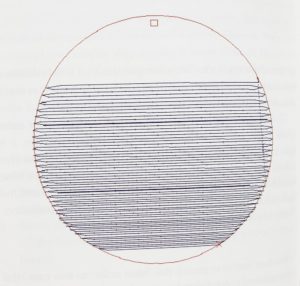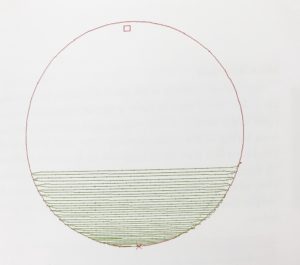
This month Danielle Park and Natalie Greetham of Madeira UK explore basic embroidery colour blending and how you can achieve this in your designs.
A long term difficulty for embroiderers when given a graphic image with blended colour effects is reproducing this in embroidery.

There are three main techniques for successfully creating embroidered colour blending:
- Stitch distance, controlling the density of colour.
- Stitch direction, by using the same stitch direction in all levels of colour, you can create a smooth blend.
- Colour choice, determines whether the blend looks abrupt or smooth.
Stitch distance
The higher the stitch density the more intense the colour representation will be and vice versa. By reducing the distance between stitched rows you can achieve an ‘accordion’ effect to fade out a single colour (see fig. 1). However, if blending two colours, for example blue to white, you may need to use three or more thread colours, a strong blue, a medium blue, a light blue and white.

The first step is to digitise the base colour, i.e. the lightest thread colour. By increasing the density slightly above 0.4mm when using a 40 weight, this will increase the vibrancy of the colour at one end of your colour fade. The base colour is used to cover more than half of the circle (see fig. 2).
Next sequentially digitise your bridging colours at a lower density covering the middle portion of the circle (see fig. 3). The last step is to add the darkest colour (see fig. 4). It looks similar to step two the only difference being that the density changes from low to high, the highest density being the same as step one for your base colour. Your goal is to first blend the bridge colour with your darkest colour and then to bring your darkest colour to its full intensity.
Stitch direction

When trying to create a smooth transition from one colour to the next it’s important to maintain a continuous stitch direction. The goal here is for the threads to lay in between each other, if the threads lay on top of one another there is no colour blend.
Colour choice
Colours should be ideally from the same family, this means they share the same colour but in different tones from light to dark. This is the easiest way to accomplish a full colour blending effect.
 Printwear & Promotion The Total Promotional Package
Printwear & Promotion The Total Promotional Package




